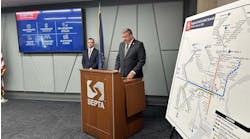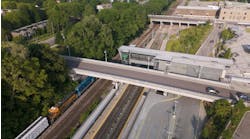What’s the Solution for Leading Change and Strategy? Align Projects with Agency Priorities
In Feb 2011, I wrote a thought piece for the Bipartisan Policy Center on the importance of an outcome-based multimodal transportation investment process. My findings at that time were the result of interviews and workshops with executives at transit agencies, state departments of transportation (DOTs), and metropolitan planning organizations (MPOs) in an effort to support reauthorization of the nation’s surface transportation bill, eventually leading to MAP-21.
In that thought piece, I underscored the importance of an outcome-driven planning process rather than one that is process oriented in and of itself. So much of the transportation planning process in regulation was more of an accumulation of what was done before, with additional process-oriented boxes to check resulting from the latest mandate. While you would think that MAP-21 and other state requirements for performance-based transportation planning would have solved this problem by now, the truth is that we are still better at tracking what we did or are currently doing than what we said we were going to do, and many public agencies still select transportation projects based on old rules of thumb and categories of funding over strategic direction, goals, and anticipated benefits. Even fewer agencies consider multiple investment scenarios in advance of developing a transportation program.
Now at Decision Lens, I see that commercial companies also struggle with implementing outcome-based processes, focusing on execution rather than strategic alignment and “doing the right things”. Once the execution is "fixed" or better managed, improved results do not always follow. This forces executives to ask, "then what's the problem?” Perhaps execution is not nearly as important as choosing the right things to do in the first place.
Doing the right things is a multi-layered execution activity and should be based on a well-articulated strategy, thus selecting the best course of action (transportation projects, initiatives, capabilities, etc.) aligned with pursuing that strategy. It assures that the right skills, competencies and capabilities are available, or it helps to identify those that need to be obtained to enable the chosen courses of action. In transportation, this is exactly the idea of performance-based planning - to help ensure that the correct projects and programs are identified and selected based on documented goals and performance targets. However, even five years after my original thought piece, transportation agencies are still finding that the upfront effort – “doing the right things” and how you get to those decisions - is far more broken than the execution side of the house ever was.
Transportation agencies, in collaboration with their planning partners - including transit agencies - will continue to benefit greatly by being proactive about strategy, strategic prioritization, resourcing, and ultimately asking the hard questions about the quality of their strategy, ideas, and outcomes. It is difficult to admit that you may know where you are going (or think you know), but that you are not completely sure how you'll get there. This is not an execution issue - what is needed is a roadmap to strategy that links agency goals and objectives directly to projects evaluated, selected, and programmed. Moreover, the most difficult aspect of this is how to perform trade-offs amongst the many competing demands that an agency has in order to establish a clear and agreed-upon set of strategic priorities.
How do we make the transition to a truly performance-based planning and project selection process? We need dig in to the conversation of project prioritization and selection. Why it is that we are funding specific investments, how are those investments aligned with our strategy, and ultimately, how are we performing in comparison to what we thought we would achieve?
Planning is no longer a once-a-year snapshot. Continuous planning processes are needed to ensure that as new projects come on line, they can be evaluated and prioritized against those that are resourced in the current program. The question is not when — as in what date do we start the planning process —, but are we enabled to do this rigorously, continuously, and truly strategically.
Michelle Maggiore, P.E., is VP of Transportation and Strategic Industries for Decision Lens.



